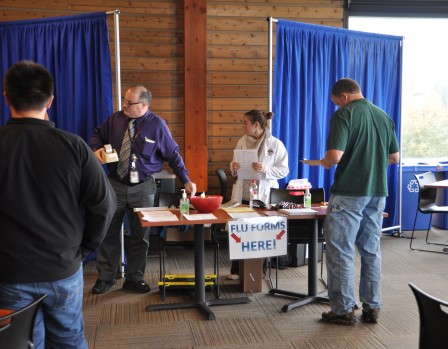
By Monica Brown, Tulalip News Writer
TULALIP, Wash. – Flu season is here and if you want to prevent from getting the flu or contributing to spreading it, the flu vaccine is the way to go. Today, Oct. 22nd, from 12:00 to 3:00pm at the Tulalip Admin building, the Tulalip Pharmacy is issuing flu vaccines on the second floor in the lunch area. For non-tribal members please bring your medical insurance information.
The Center for Disease Control recommends that all those who are able to be vaccinated do so. Listed below is some information from the CDC about how the vaccine works and who should consider getting vaccinated.
How do flu vaccines work?
Flu vaccines cause antibodies to develop in the body about two weeks after vaccination. These antibodies provide protection against infection with the viruses that are in the vaccine.
The seasonal flu vaccine protects against the influenza viruses that research indicates will be most common during the upcoming season. Traditional flu vaccines (called trivalent vaccines) are made to protect against three flu viruses; an influenza A (H1N1) virus, an influenza A (H3N2) virus, and an influenza B virus. In addition, this season, there are flu vaccines made to protect against four flu viruses (called “quadrivalent” vaccines). These vaccines protect against the same viruses as the trivalent vaccine as well as an additional B virus.
While everyone should get a flu vaccine this season, it’s especially important for some people to get vaccinated.
Those people include the following:
- People who are at high risk of developing serious complications (like pneumonia) if they get sick with the flu.
- People who have certain medical conditions including asthma, diabetes, and chronic lung disease.
- Pregnant women.
- People younger than 5 years (and especially those younger than 2), and people 65 years and older.
- A complete list is available at People Who Are at High Risk of Developing Flu-Related Complications.
- People who live with or care for others who are at high risk of developing serious complications (see list above).
- Household contacts and caregivers of people with certain medical conditions including asthma, diabetes, and chronic lung disease.
- Household contacts and caregivers of infants less than 6 months old.
- Health care personnel.